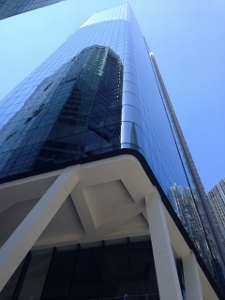 The most common way that the designer of a new building establishes the expected wind pressures and structural wind loads is to use the latest Australian Standard (AS/NZS1170.2), or similar document pertinent to the geographic region of the site. These documents are generated by knowledgeable committees using hundreds of wind-tunnel studies and, since these methodologies have to apply to many geometries and locales, they are somewhat conservative documents. By performing a site-specific, building-specific, wind-tunnel study the design team obtains the actual peak structural wind loads or the true wind pressure distribution over their new building; effectively placing the "money" where it is needed. Additionally, on the rare occasions that the shape of the subject building, or the influence of nearby buildings, generates wind pressures and/or wind loads larger than the code calculations the design team needs to know that is the case, so that the design is adequate. A pure code approach would miss these rare eventualities. The wind-tunnel model will include the impact of nearby buildings and any terrain of consequence; neither of which are adequately addressed in the AS/NZS1170 analysis or other code/standard.
The most common way that the designer of a new building establishes the expected wind pressures and structural wind loads is to use the latest Australian Standard (AS/NZS1170.2), or similar document pertinent to the geographic region of the site. These documents are generated by knowledgeable committees using hundreds of wind-tunnel studies and, since these methodologies have to apply to many geometries and locales, they are somewhat conservative documents. By performing a site-specific, building-specific, wind-tunnel study the design team obtains the actual peak structural wind loads or the true wind pressure distribution over their new building; effectively placing the "money" where it is needed. Additionally, on the rare occasions that the shape of the subject building, or the influence of nearby buildings, generates wind pressures and/or wind loads larger than the code calculations the design team needs to know that is the case, so that the design is adequate. A pure code approach would miss these rare eventualities. The wind-tunnel model will include the impact of nearby buildings and any terrain of consequence; neither of which are adequately addressed in the AS/NZS1170 analysis or other code/standard.
Thus, a wind-tunnel study yields a truer understanding of the design wind loads, often resulting in reduced cladding and structural expenses. On the rare occasions that the discovery of larger than expected loads and pressures occurs the design team needs to know these data to ensure a responsible design. In the case of tall slender building designs the wind tunnel will yield information about the motion to be expected on the upper floors that may actually control the design.

